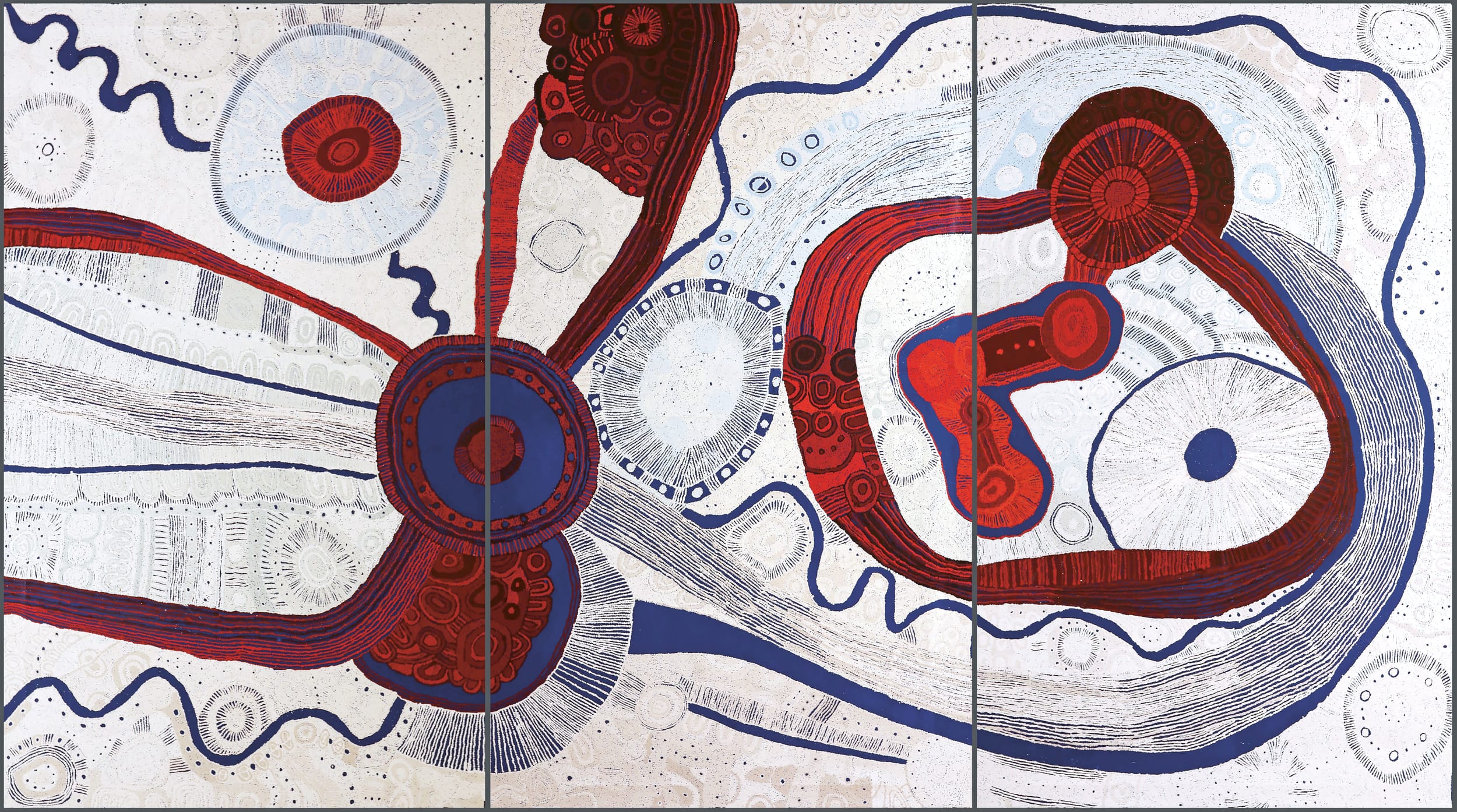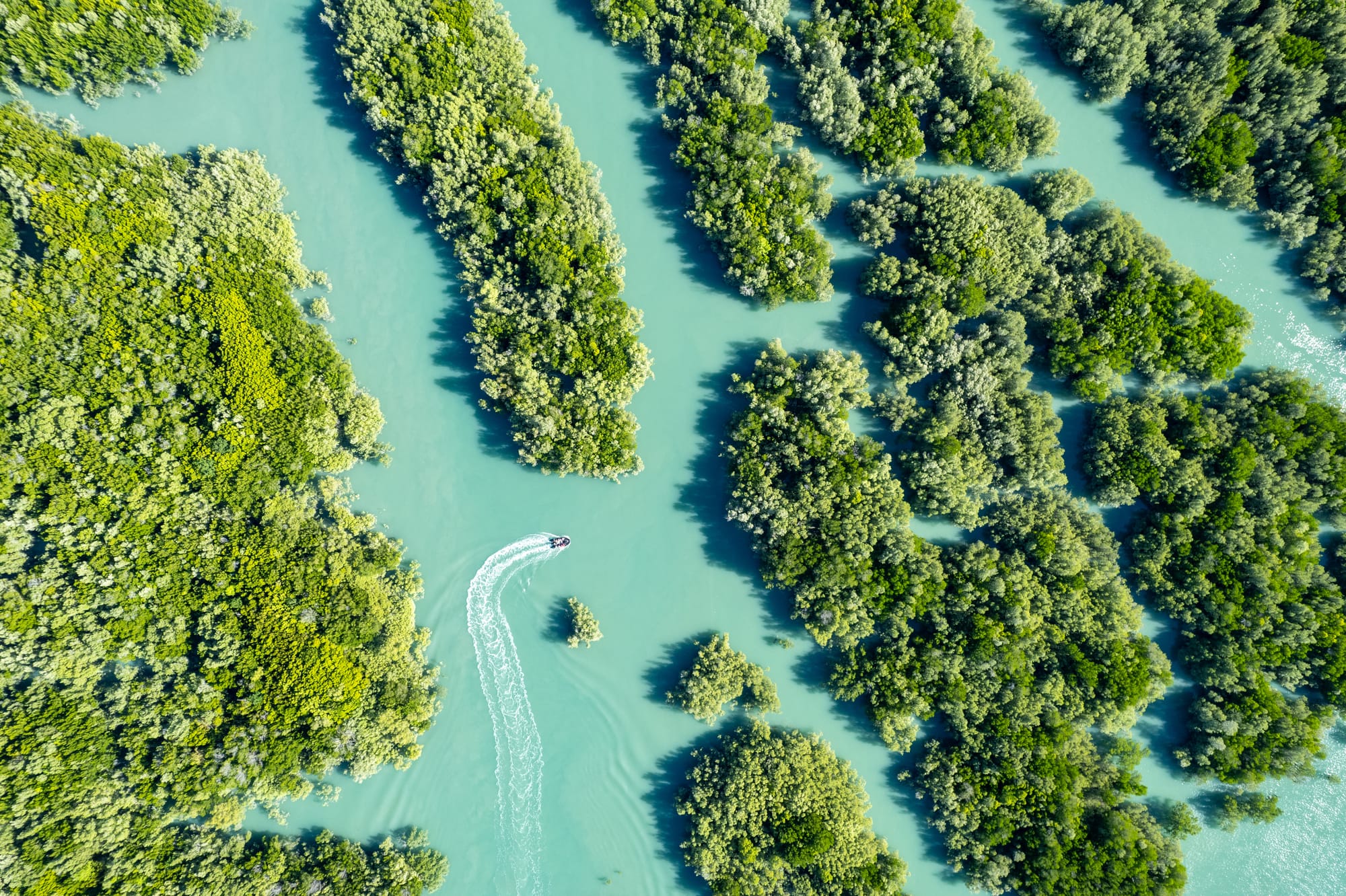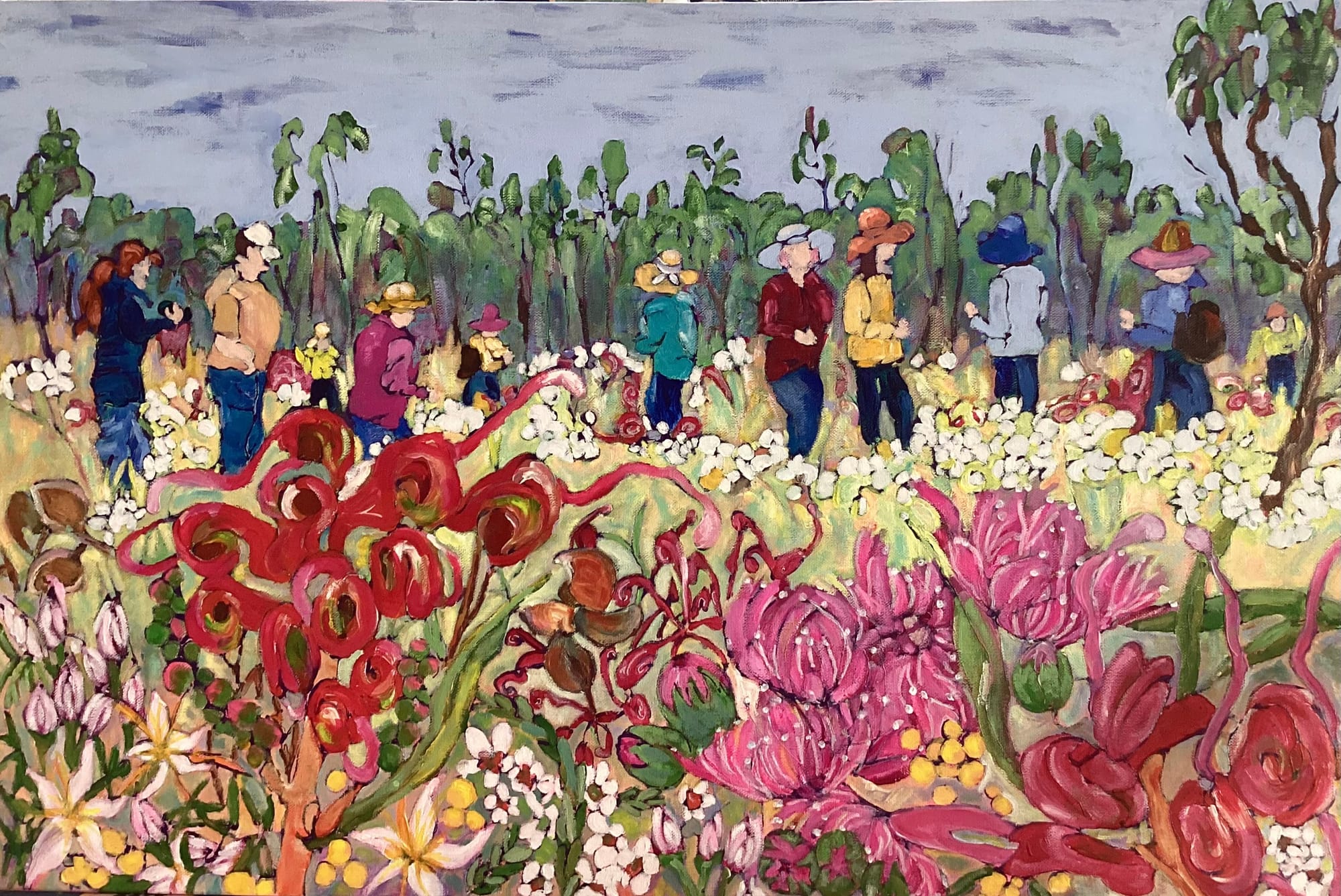
Art meets nature and a talent hunt. Welcome to Galah Weekly, our award-winning newsletter keeping you up to date with regional headlines that matter, plus other delightful things from life beyond the city. By Dean Southwell, who thinks a Queensland trip sounds great.
Western Queensland has taken giant steps to recover from record floods that turned much of the region into an inland sea three months ago. Now it desperately needs tourists to return.
Barcoo Shire Council mayor Sally O’Neil said that while communities were still recovering from the floods and were grateful for the help they had received, getting visitors to the region was the top priority.
“We need tourists to stay and not just drive through on the way to somewhere else. Spend some money, go to the pub, go to the shop, get some fuel,” she urged. The payoff for visitors is the post-flood landscape is witnessing an explosion of plant and animal life.
Meanwhile, a grazier in the region is making the most of all that moisture by growing sorghum crops he can harvest and store for years in underground pits. It gradually forms thousands of tonnes of silage he believes will sustain his stock through years of future droughts.
Get the most out of your trip to the Kimberley region with Ponant Explorations’ all-inclusive packages and let the team organise everything from expert-led, daily shore excursions to seamless flights and transfers and all meals on your luxury small ship. The easiest way to discover the Kimberley in style. Book today by calling 1300 737 178 or contact your preferred travel agent.
An 11-week trial that put intense scrutiny on the Gippsland towns of Leongatha and Morwell has ended. Erin Patterson was found guilty of three murders after she laced her in-laws’ beef Wellington lunch with poisonous mushrooms.
Despite the guilty verdict, the critical question of why she did it remained unanswered.
Patterson was also found guilty of attempting to kill a fourth person when she concealed death cap mushrooms in the meal served in 2023.
Now the verdict is in, behind-the scenes insights are emerging, including key evidence and recordings presented to the jury.
The case drew international attention to the Victorian towns and the verdict featured in media coverage around the world. It’s a drama already destined for television or movie treatment.
A new immersive gallery on the edge of Victoria’s Grampians (Gariwerd) National Park uses art to start conversations about the environment.
The not-for-profit Wama Foundation sits on 16 hectares of a former tobacco plantation near Halls Gap and is billed as Australia’s first environmental gallery. Although it received federal government infrastructure funding, its operations will be funded by donations and ticket sales.
Last weekend’s opening was the culmination of years of work that included construction of its National Centre for Environmental Art, which opened with an exhibition by West Australian artist Jacobus Capone exploring climate change.
The site also features an endemic botanic garden and artwork across the grounds. Dozens of species among the 500 plants in the garden are found only in the Grampians area.
CEO Pippa Mott said the Wama Foundation offered visitors the chance to explore connections between art and the natural world.
In a region devastated by bushfires during the past two summers, it also offers an insurance population of native plants. The foundation says the endemic garden has been developed in consultation with local experts that included Indigenous groups.
Bendigo Bank is closing 10 branches across the country just months after a federal government deal appeared to push closures off the agenda.
The closures will leave five regional towns without in-person banking by October. Branches in the towns of Bannockburn and Yarram will be among six to close in Victoria, while the Queensland towns of Malanda and Tully North and the Tasmanian mining town of Queenstown will also lose bricks-and-mortar services.
Finance Sector Union national secretary Julia Angrisano criticised the decisions, saying “it felt very big bank for all the wrong reasons”.
Bendigo Bank said the company was "proud of its regional heritage" and maintained more branches per customer than any other Australian bank.
Earlier this year the federal government brokered a deal with the big four banks to keep regional branches open until at least 2027.
Barn owls are being encouraged to feast on vermin as part of a pilot program to reduce the use of poison to control rats and mice on farms.
Staff at a macadamia farm at Clunes in the NSW Northern Rivers have been building artificial hunting roosts and nesting boxes for the owls. The artificial homes replace trees with hollows that were removed during historic land clearing and can take more than a century to form.
The impact on rodent control has been so effective that three other farms in the area have joined the program, which allows farmers to reduce their use of poisons, thus reducing the volume of toxin that builds up in the food chain.
South Australia’s Whyalla region, already hit by uncertainty over the troubled steelworks, is facing more job losses as Santos reviews operations at its Port Bonython gas processing facility.
Port Bonython is about 30km north-east of Whyalla and about 50 jobs are at stake.
The SA mid-north town of Laura is also facing job losses after its largest employer, ice-cream manufacturer Golden North, said it would move operations to Murray Bridge during the next 12 months. Golden North said it wanted processing closer to its milk suppliers.

Galah is a proud media partner of the Byron Writers Festival, taking place in Bangalow NSW on 8-10 August. If you follow us on Instagram, you’ll know we have 3 x three-day festival passes (worth $330 each) to give away to one person.
This year’s line-up of speakers is, as always, stellar and too long to list here. But just for starters, Galah is sponsoring the session with author Robbie Arnott in conversation with Naima Brown on 8 August.
All you have to do for a chance to win the three passes is jump on Instagram and tag the two friends you’d love to join you. Full details here
New England Regional Art Museum director Rachael Parsons is passionate about art and the role it plays in regional communities.
Now she’s looking for a creative leader with the same passion to join her team at Armidale. NERAM is recruiting a curator and exhibitions manager, and Parsons has asked Galah to help spread the word.
Last week Parsons spoke of the challenges every regional gallery faces but also of the critical role they play in fostering vibrant, clever communities. “We’re not just about artworks on a wall,” she said. “We’re places that people come to meet, socialise and connect.”
NERAM hosted the Galah Regional Photography Prize this year so we know first-hand what the team offers at Armidale. We’re also keen to highlight opportunities for creative talent to thrive in the regions.
If you think you’re the person Parsons wants, contact her on director@neram.com.au or learn more here.

This touring exhibition features contemporary artworks and designs that reimagine and celebrate native wildflowers. It also features a local component with artists responding to the wonders of Gurulmundi and Western Downs wildflowers. At Dogwood Crossing, Miles, Qld, 26 July-25 September. Read more
Bundanon is celebrating the work of two Australian artists with its season 2 exhibitions. Betty Kuntiwa Pumani presents maḻatja-maḻatja (those who come after), a survey of works spanning 2012 to the present day. The Shape of Music brings together four bodies of work by David Sequeira. At Bundanon, Illaroo, NSW, until 5 October. Read more
Entries are open for the Castlemaine Art Museum’s 2025 Experimental Print Prize. The museum invites entries from Victorian artists who use innovative approaches to traditional printmaking processes. Entries close on 28 September. Read more
This exhibition presents work from the gallery collection that explores home and connection to place as a sanctuary. At Tweed Regional Gallery, Murwillumbah, NSW, until 26 October. Read more
Interview: Emma Hearnes
Macramé usually conjures images of boho plant hangers and weekend craft stalls, but imagine it scaled up to architectural proportions. South Gippsland-based Sarah Parkes is the artist behind Smalltown, where traditional macramé is reimagined in bold, sculptural works that blur the line between craft and contemporary design.
Where do you live and work? I’m based on our farm in Fish Creek on Gunaikurnai Country. My studio is a large converted shed with big wooden doors that I can roll open to a view of my vegie patch and the paddocks and trees beyond.
What do you remember about tying your first square knot? I taught myself macramé from vintage craft books collected from op shops. In those days there were no YouTube tutorials, and it took me a while to master the knots from pictures. I’d had a varied creative career until then, always making things, and had a little jewellery label on the go. Macramé was still steeped in the ’70s, and I saw the potential to contemporise it. It was when a friend commissioned me to make a seven-metre wall piece for his clothing store that I discovered the joy of working at a larger scale with thick polyester rope.
What draws you to keep exploring and expanding macramé? I still feel a sense of wonder and curiosity with knotting – the potential is endless and I have a head full of ideas. I’m now exploring different materials including agricultural waste products such as silage wrap, hay-bale netting and baling twine. I’ve also made a small rope maker and I’m collaborating with fashion labels to repurpose their textile waste into sculptural works. I am quite obsessed with wool at the moment, which we have endless bales of, and I’m deep in the land of felt.
Tell us about your most challenging project? Each commissioned work comes with its own creative and technical challenges and that's what I enjoy about it. One of my biggest jobs was for Hyatt Regency in Sydney. We knotted a 22m x 4.5m rope screen and a narrower 33m accompanying piece. Both were wrapped around the bar area and were created onsite while it was a construction zone. There were lots of technical and logistical considerations, and also the expectation of it being good enough to feature in a beautifully designed five-star hotel.
If you’re passionate about making a difference in rural and regional Australia, here’s your chance to get some support.
The Country Education Foundation has opened applications for the Tim Fischer Fellowship, named in memory of the former deputy prime minister.
The fellowship offers funding of up to $50,000 for mentorship and networking opportunities to help turn bold ideas into reality. Applications close on 17 August, with the winner announced in October. Apply here if you’re keen.
We’d love to hear about the news, events and people that should be making the headlines in the Galah Weekly newsletter. Share what’s new(s) in your neck of the woods with us at newsie@galahpress.com